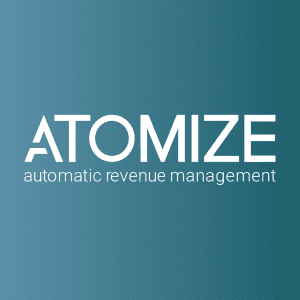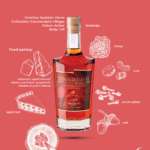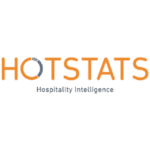In any ever-growing hospitality market, existing players are constantly pushed to find ways and means to stay competitive and relevant. Key performance indicators (KPIs) are therefore some of the most crucial statistics monitored by hoteliers. More so today, when the competitive marketplace is so dynamic, it is coercing revenue managers to scrutinize these data points on a daily basis.
 These primary KPIs – the market penetration index (MPI), average rate index (ARI) and revenue generated index (RGI) – help benchmark your revenue performance against your defined competitive set and in turn develop positioning strategies. Hotel companies also set targets based on these indices and their respective percentage growths. Having said that, any benchmarking or analysis would be meaningless if you were comparing your hotel with the wrong comp-set.
These primary KPIs – the market penetration index (MPI), average rate index (ARI) and revenue generated index (RGI) – help benchmark your revenue performance against your defined competitive set and in turn develop positioning strategies. Hotel companies also set targets based on these indices and their respective percentage growths. Having said that, any benchmarking or analysis would be meaningless if you were comparing your hotel with the wrong comp-set.
Identifying competition
A competitive set (or comp-set) should typically be a group of at least four to five hotels that are able to qualify as direct competitors to your own asset. To be fair, it is often difficult to define your ideal comp-set due to a variety of reasons. Fact is that it is very rare to find a competitive environment where every single hotel in your comp-set can be justifiably considered to be 100% competitive to your asset across all parameters. Therefore, to determine which hotels compete with you and to what degree, you would need to carefully consider various factors that are discussed ahead.
The Four P’s in a Pod
Proximity
Two divergent (yet equally relevant) schools of thought are pertinent when assessing the proximity of your proposed comp-set to your own hotel. First, it is rather obvious to assume that hotels with geographic proximity to your asset, if displaying similar attributes, would be highly competitive. Moreover, hotels with a marginally different product or positioning offering, yet in very close proximity to your hotel, are also highly likely to be competitive. This is true especially during peak periods, when the guests are in need to be present at a certain place and would choose amongst hotels in that area, even if those hotels might be lower/higher positioned or priced.
Alternatively, there are instances (in virgin / nascent markets or at get-away resort locations) where the proximity of competitors may not be immediate in nature. The radius could conceivably extend to the larger region, state or even require a nation-wide comp-set to be ascertained.
Positioning
Broadly, hotels fall into seven different positioning – Economy, Budget, Midscale, Upper Midscale, Upscale, Upper Upscale & Luxury. Several yardsticks, including (but not limited to) the guestroom size, food & beverage offering, banqueting & spa spaces, other facilities & amenities, the brand owning/operating the asset and the overall space / FSI consumed can help one assess the positioning of competing hotels. Those with similar attributes would likely be more competitive.
Product
As explained above, the product has a large role to play in the definition of an asset’s positioning. However, two similarly positioned assets with comparable proximity may not be equally competitive to your hotel because the quality, upkeep and overall condition of these two products may not be of equal calibre. The physical condition of a product thus plays an important role in defining its competitiveness to your asset.
Price
The room-rate plays a key role in a guest’s decision to stay at your hotel. One may argue that the rate commanded by a hotel is a reflection of the scale and quality of the hotel. Fact is that this is not necessarily true – The rate could vary significantly between two similar products in close proximity. Likewise, two products with different positioning within a competitive radius could have similar pricing.
While varying skills of the revenue managers in the two hotels could be a driving factor, the demand segments a hotel caters to or an occupancy driven strategy adopted by one of the hotels could also result in the rate variance or lack thereof. In such cases specifically, it is important to consider other parameters thoroughly before including or excluding a hotel from your set.
Other factors of importance
Demand segments
While the number of rooms often decides the demand segments a hotel could cater to, the facilities offered could also be demand drivers to certain segments. A 250-room upscale city hotel with ample banqueting and multiple F&B options could be catering to a larger MICE segment while a hotel with similar inventory and positioning could be driving corporate business despite being in the same vicinity. If the type of business overlap in these two assets is negligible, then considering them to be highly competitive, just because they have similar products, positioning and proximity could be a folly.
Online rates and reputation
One must remember that at some level your competitors are identified by your guests and it is they who really define your comp-set. It is therefore important to be cognizant of what they are looking for and what they see or say. A hotel’s online reputation and listed rates are significant influencers in a potential guest’s decision-making process.
So, a higher rating on says TripAdvisor may allow you to command a better price and possibly then cater to a different demand segment than a similarly positioned hotel two blocks away from you with similar offerings. Many hotels now also use various rate shopping tools to compare their current pricing with the ones of their competitors to make proper pricing decisions.
Overall, adopting sophisticated, new-age revenue management practices (such as Total Revenue Management) or soliciting the services of third party consulting firms for prudent online & offline revenue optimization always makes business sense.
In conclusion, real-time & targeted revenue management strategies coupled with a keen understanding of your true competitive-set are both imperative. Quantifying and objectively assessing your competitive environment by adopting the strategies explained in this article can help hotels stay ahead of the curve and earn that much-needed edge in an ever-evolving marketplace.























